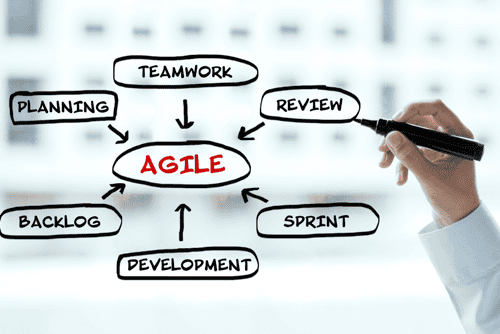Sometimes, as a small or mid-sized business owner, it feels like the odds are against you, and big business has all the advantages.
However, that’s just not true. Small and mid-sized businesses have a significant advantage over their larger, lumbering brethren: agility. As the saying goes, it’s easier to turn a boat than a battleship, and a small and mid-sized business can always make decisions and adapt much faster than a large corporation.
There are many ways for small and mid-sized businesses to capitalize on this agility, including adapting quickly to customer feedback, piloting new ideas, and capitalizing on an agile talent strategy.
What’s an Agile Talent Strategy?
An agile talent strategy is a method to help companies nimbly access the talent they need to deliver a business’ core value proposition. Companies can quickly scale up and down as needed through this method while keeping costs steady and predictable.
“When describing an agile talent strategy, the verb we use is ‘access’ talent as opposed to ‘acquire’ or ‘hire’ it in the traditional full-time sense,” said Elizabeth Eiss, Founder and CEO of the talent curation and freelance recruiting platform ResultsResourcing. “It’s agile because it shifts talent acquisition to talent access with a variable, hybrid cost model that’s a combination of full-time, part-time, and contract, as well as onsite and remote.”
How an Agile Talent Strategy Helps Businesses
Small to mid-size businesses face a bevy of challenges in today’s complex economy, such as:
- Stabilizing business models upended by the continuing pandemic.
- Unpredictable buying patterns from the downstream customers that impact their business.
- Supply chain issues, for example, shortages due to shipping issues.
- Companies that are physically dependent, but customers and workers don’t want to travel or be onsite.
- Polarization around vaccine and heath.
- Schools opening and illness continues to impact workers with kids.
- Getting quality, trustworthy talent.
- An immediate need to move a business online – operationally and from a revenue-generating perspective.
A shift to an agile talent strategy can help businesses address many of these issues because flexibility and variable costs make businesses nimbler and lessen the capital required to build a quality team.
“The first step when shifting to an agile talent strategy is for business owners and managers to pinpoint the company’s core value and refocus the business around it. What will customers continue to pay for during these uncertain times? A significant part of that refocusing is identifying employees with the essential skills and relationships to deliver the core value,” said Eiss.
“The next phase is an examination of the important but non-core roles that support delivery of the primary customer value. Outsourcing these roles is a sound option. Some possibilities include contracting independent or freelance workers who can provide the skills needed for these roles or partnering with a complementary business. Outsourcing recruiting – for either full-time or contract roles – is another excellent example of outsourcing important but non-core work.”
Another Benefit of an Agile Talent Strategy: Diversity
In addition to providing flexibility to a company, an agile talent strategy also brings diverse viewpoints to a business.
“Contractors often work with an extensive portfolio of clients, and talent skilled in different markets brings independent thinking and expertise to the table. These fresh insights into new markets can help small and mid-sized businesses expand their reach,” said Eiss.
“An agile talent strategy is a fundamental shift in how businesses access talent that gives small and mid-sized businesses the edge they need to compete.”
To learn more about the benefits of an agile talent strategy and how ResultsResourcing can quickly help you make the shift, schedule your free consultation.



